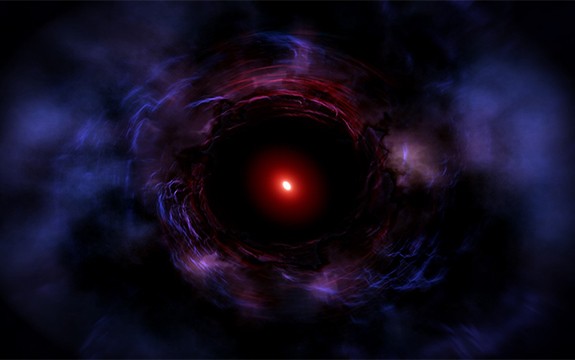By Ana Verayo, | April 13, 2017

An artist’s impression of galaxy ZF-COSMOS-20115. (Swineburne University of Technology)
Astronomers have recently detected a dead galaxy, which means that this ancient galaxy lived fast and died young. This galaxy is not producing stars anymore, rendering it "inactive."
Scientists revealed that this galaxy was around three times bigger than the Milky Way during a time when the universe was just 1.65 billion years old. Researchers say that the lifespan of this galaxy was short and extreme.
Like Us on Facebook
Scientists suggest that this galaxy ran out of stellar fuel and ultimately stopped churning out new stars soon after it formed. A team from Swinburne University of Technology in Australia observed this galaxy known as ZF-COSMOS-20115. However, this is not what it appears today since light from this galaxy traveled millions of years to reach Earth.
Scientists believe that there are plenty of inactive galaxies which formed in the early days of the universe and used to have high stellar populations that produced stars at an astonishing rate.
According to the lead author of the study, Karl Glazebrook, the director of Swinburne's Centre for Astrophysics and Supercomputing at Swinburne University of Technology, this colossal galaxy formed like a firecracker within 100 million years, immediately during the first period of cosmic history. It quickly grew into a monster galaxy until it exhausted everything else and turned itself off some more than 12 billion years ago.
Astronomers suggest that this dead galaxy is five times larger than the Milky Way galaxy which gave birth to 300 billion stars, in a universe 10 times smaller during that time. The team says that their new findings about the early formations of massive stellar systems can challenge the current knowledge about what the early universe looked like.
The team found several of these ancient, dead galaxies that they will continue to observe them and collect data using the Keck Telescope in Hawaii and soon, with Hubble Space Telescope's successor, NASA's James Webb Space Telescope to be launched in October 2018.
This new study was published in the journal Nature.
-
Use of Coronavirus Pandemic Drones Raises Privacy Concerns: Drones Spread Fear, Local Officials Say

-
Coronavirus Hampers The Delivery Of Lockheed Martin F-35 Stealth Fighters For 2020

-
Instagram Speeds Up Plans to Add Account Memorialization Feature Due to COVID-19 Deaths

-
NASA: Perseverance Plans to Bring 'Mars Rock' to Earth in 2031

-
600 Dead And 3,000 In The Hospital as Iranians Believed Drinking High-Concentrations of Alcohol Can Cure The Coronavirus

-
600 Dead And 3,000 In The Hospital as Iranians Believed Drinking High-Concentrations of Alcohol Can Cure The Coronavirus

-
COVID-19: Doctors, Nurses Use Virtual Reality to Learn New Skills in Treating Coronavirus Patients







